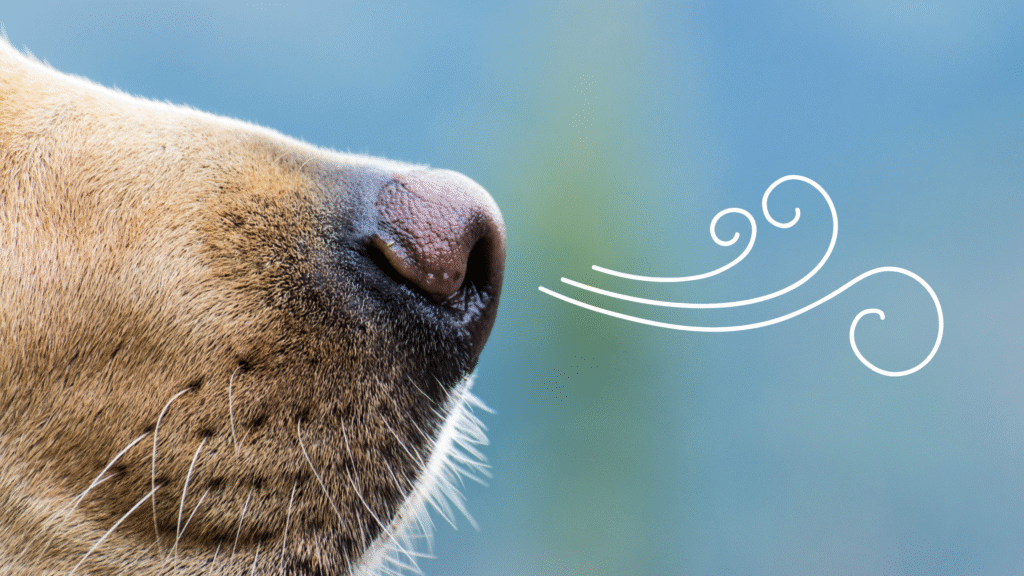Did you know your dog can smell your stress before you even feel it?
That’s not a figure of speech: it’s science. Your dog’s nose is powerful enough to detect changes in your body’s chemistry, including cortisol, your primary stress hormone. And when we train dogs to recognize and alert to those changes, the result can be life-changing for people with anxiety, PTSD, or other psychiatric conditions.
But here’s the part most people miss:
Medical alert training doesn’t start with teaching the dog to “do something.”
It starts with building the foundation.
In this post, I’ll walk you through how to begin cortisol detection training the right way: with clean sample collection, clear scent associations, and a step-by-step plan to build reliability without rushing the process.
🧠 What is Cortisol and Why Use It in Training?
Cortisol spikes when we’re stressed, panicked, overwhelmed, or overstimulated. It’s one of the most consistent internal indicators of emotional dysregulation — which makes it a great target for scent-based medical alert tasks.
Dogs can detect these cortisol shifts through scent, often before you’re even consciously aware of them. That’s what makes cortisol alert training so powerful for people with psychiatric service dogs.
But the key to long-term success? Start with scent recognition before alert behavior.
🧪 How to Collect Cortisol Samples Safely
Before you begin any training, you’ll need samples your dog can actually work with — and they need to be clean and consistent.
Here’s a quick breakdown:
- Wear a cotton pad or sterile gauze on your chest during a genuine stressful moment.
- Use gloves or tweezers to handle it (no bare hands).
- Store in a Ziploc bag — ideally using bags from the same box every time.
- Label it with the date and note whether it’s a “hot” (stress) or “neutral” (baseline) sample.
- Freeze it immediately.
This gives your dog a clear scent picture to work from. And yes — the little things (like using the same bag brand) do matter. Dogs are that sensitive.
👉 Want step-by-step guidance?
Download my Free Cortisol Sample Collection Guide at collabdogtraining.com
🐾 How to Introduce the Scent with Pairing Games
Once you have your samples, don’t jump into alert training just yet.
Start by using scent pairing games — a method borrowed from K9 Nose Work:
- Place the cortisol sample in a box with a treat.
- Add a few blank boxes nearby.
- Let your dog explore freely — no cues, no pressure.
- When they show interest in the sample box, reward!
This is how you build what I call odor value — your dog learns that this scent = good things.
Once they start consistently seeking out the target box, you’re ready to build further.
It’s important to remember that not all dogs are equal when it comes to odor detection, so go at your dog’s pace. Yes, dogs have powerful nose, but being able to detect and differentiate odors in the environment is a skill some dogs are better at than others.
🌍 Generalize Early (But Gently)
A common mistake is training only in one room.
But odor travels differently in different environments — it’s affected by airflow, surface type, humidity, and more. That’s why it’s important to gently start practicing in new locations (like the garage, porch, or a different room) before you ever expect your dog to alert.
That said, most people move WAY TOO FAST. Don’t generalize until your dog shows a CLEAR sign that they know what they’re doing and are actively searching for the odor.
Keep sessions short and fun. If you find yourself getting stressed, that is a sign you’re probably moving too fast.
✋ Teach the Alert Behavior Separately
Your dog doesn’t need to learn the alert right away. In fact, I strongly recommend not combining scent and alert behavior in the beginning.
Teach the alert — whether it’s a paw touch, nose poke, or chin rest — as a completely separate behavior first. Once your dog understands both pieces confidently, then you can begin pairing them.
It’s just like teaching math and handwriting separately before giving a word problem. Don’t overload your dog.
✅ Quick Recap
- Cortisol is a powerful scent for psychiatric service dog alerts.
- Start with clean, intentional sample collection.
- Use pairing games to build value in the scent.
- Generalize early to new environments.
- Teach alert behavior separately to build clarity and confidence.
🐶 Ready to Go Deeper?
If you’re looking for a complete roadmap to train your psychiatric service dog — from scent work to public access to task training — I’ve got you covered.
Explore my signature course:
👉 Psychiatric Service Dog A-Z Blueprint
It’s designed for self-trainers who want expert guidance, ethical training strategies, and real results.
You can also explore more step-by-step online courses at
👉 collabdogtraining.com/courses
